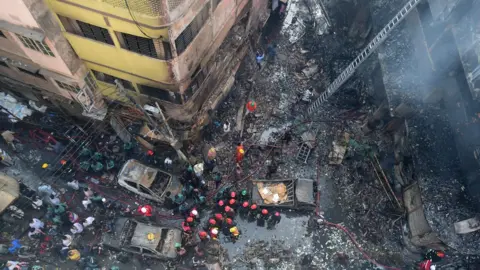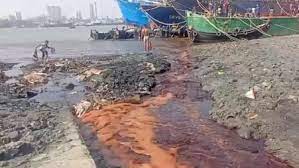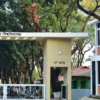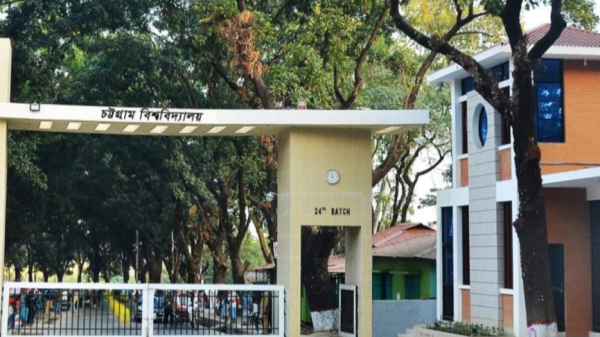A Correspondent:
Chattogram: The fire at the S Alam Group-owned sugar refinery factory in Chattogram has trig-gered a cascade of environmental repercussions, including water and soil contamination, air pollu-tion, ecological disruption, potential health risks, and lasting environmental effects.
The Karnaphuli River is facing severe pollution as burnt waste from the mill, particularly melted sugar from warehouse number 1, is directly flowing into the river through two drains, turning its water copper-colored and leading to a distressing sight of dead aquatic animals along its banks.
The polluted water is causing harm to various aquatic species, including fish and crabs. Locals said dead fish have been floating in the river since Tuesday.
Burning sugar can create harmful byproducts like ash and trace amounts of nitrogen oxides and sulfur oxides. Sugar processing generates large volumes of wastewater containing organic matter, nutrients, and sometimes harmful chemicals like pesticides used in sugarcane cultivation. This can deplete oxygen in the river, harming aquatic life.
As a result, low oxygen levels and potential toxins from the burnt sugar are leading to fish kills and disrupting the aquatic ecosystem in the area.
The burned waste is not confined to the river alone, spreading several kilometers around the facto-ry, said residents of the nearby area.
This is causing inconvenience and health concerns for the residents of Ichanagar.
As the combustion of sugar and other materials in the godown released various pollutants into the air, including carbon dioxide, carbon monoxide, particulate matter, and potentially toxic gases, this caused poor air quality in the surrounding area, affecting both human health and the environment.
Burning sugar also releases specific air pollutants like acrolein, a known irritant to the eyes and respiratory system.
Nazrul Islam, a local, said “Some locals are facing respiratory issues and we are afraid of getting sick.”
He expressed worry about the continuous dumping of factory waste in the river.
“The waste of these factories is regularly dumped into the river. Now they are dumping it on the roads and fields,” he said.
River researcher Idris Ali pointed out that the factory needed to allocate sufficient space for waste disposal before establishment.
The failure to do so has led to the burnt waste from the factory polluting the Karnaphuli River, posing a threat to fisheries and biodiversity, he said.
He also mentioned that prolonged fire can have a direct impact on the local ecosystem, harming plants, animals, and microorganisms.
“The release of pollutants into the air and water can disrupt the balance of the ecosystem and pose a threat to biodiversity,” he said.
Depending on the scale of the fire and the effectiveness of containment measures, the long-term environmental effects could persist even after the fire is extinguished. This may include ongoing pollution of air, water, and soil in the area.
“The environmental damage incurred may become irreversible,” said the expert.
He underscored law enforcement agencies’ need for heightened vigilance in enforcing regulations.
Meanwhile, Kamrul Hasan, the Deputy Director of the Department of Environment visited the site to collect water samples from both the factory drain and the river for analysis.
“Upon testing the water samples, we will be able to determine the extent of damage to various wa-ter components,” he said.
Mostain Billah Adil, Chief Land Resources Officer of S Alam Group, said, “Approximately 30 dump trucks are currently depositing molten raw sugar at our designated site. We are making our best efforts to manage the situation. At this point, we can only be sorry now.”














































